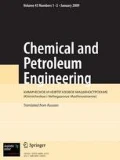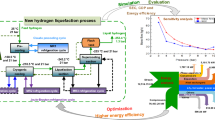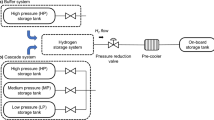LNG gas-turbine engines have several advantages over diesel engines: capacity to develop higher power with smaller weight and size, lower fuel price, environment friendliness, etc. At the same time, this type of engines is characterized by low efficiency at insufficient load and high idle-run fuel consumption. A part of the energy losses under these conditions occurs in the cryogenic unit of the LNG gas-turbine engine fuel system. Schematic diagrams and characteristic features of the cryogenic unit of the LNG gas-turbine engine are presented. Schemes of LNG delivery with vapor-pressurization, sparging of the tank with an external noncondensing gas, and use of pumps are described. The impact on the fuel system performance of such factors as fuel delivery mode, LNG flow return, restraining temperature of the delivered LNG, variation of LNG composition, etc. are investigated. The criteria of efficiency of the system in start, main, and idle modes are calculated by mathematical modeling method.






Similar content being viewed by others
References
K. Cullinane and Bergqvist, “Emission control areas and their impact on maritime transport,” Transport. Res., Part D: Transport and Environ., 28 (0), 1–5 (2014).
LNG-fuelled Deep Sea Shipping, The Outlook for LNG Bunker and LNG-Fuelled Newbuild Demand up to 2025, Lloyd’s Register (2012).
V. A. Markov, V. G. Kamaltdinov, and S. S. Lobada, “Biofuel mixture composition and parameters of exhaust gases toxicity,” IOP Conference Series: Mater. Sci. Eng., 327 (2018).
V. Aesoy, P. M. Einang, D. Stenersen, et al., LNG Fuelled Engines and Fuel Systems for Medium-speed Engines in Maritime Applications, Soc. Automat. Engineers (SAE) of Japan (2011).
C. Ludwig, “Pressure variations in a cryogenic liquid storage tank subjected to periodic excitations,” Int. J. Heat and Mass Transfer, 66, 223–234 (2013).
A. M. Arkharov, I. A. Arkharov, Y. A. Shevich, et al., “Analysis of existing small-capacity plants for natural-gas liquefaction,” Chem. Petrol. Eng., 46, No. 7–8, 397–416 (2010).
R. R. Nagimov, I. A. Arkharov, and Navasardyan E. S. Navasardyan, “Problems and development of methods of dynamic simulation of cryogenic systems,” Chem. Petrol. Eng., 52, No. 7–8, 476–480 (2016).
Y. Samokhvalov, A. Kolesnikov, A. Krotov, et al., “Heat transfer in the structure of a spiral-wound heat exchanger for liquefied natural gas production: review of numerical models for the heat-transfer coefficient of condensation for a hydrocarbon mixture in a horizontal tube,” J. Enhanced Heat Transfer, 25, No. 2, 109–120 (2018).
A. M. Arkharov, I. A. Arkharov, Y. A. Shevich, et al., “Statistical entropy analysis of low-output plants for liquefaction of natural gas with methane content of 92%,” Chem. Petrol. Eng., 48, No. 3–4, 233–245 (2012).
A. Hofmann, “The thermal conductivity of cryogenic insulation materials and its temperature dependence,” Cryogenics, 46, No. 11, 815–824 (2006).
Author information
Authors and Affiliations
Corresponding author
Additional information
Translated from Khimicheskoe i Neftegazovoe Mashinostroenie, Vol. 56, No. 5, pp. 12−16, May 2020.
Rights and permissions
About this article
Cite this article
Arkharov, I.A., Navasardyan, E.S., Krotov, A.S. et al. Impact of Negative Factors on Performance of Cryogenic Unit of LNG Gas-Turbine Engine Fuel System. Chem Petrol Eng 56, 351–359 (2020). https://doi.org/10.1007/s10556-020-00780-1
Published:
Issue Date:
DOI: https://doi.org/10.1007/s10556-020-00780-1




